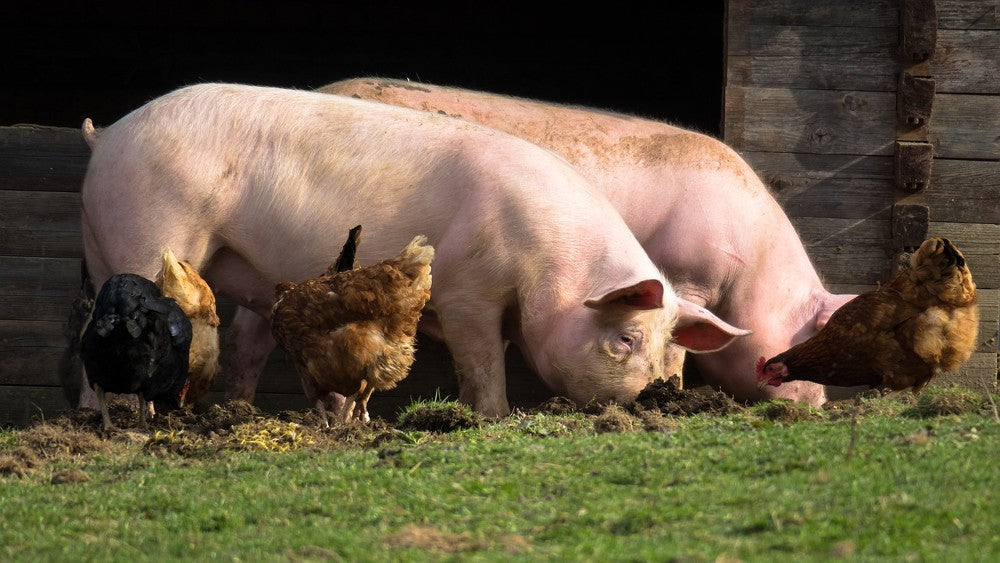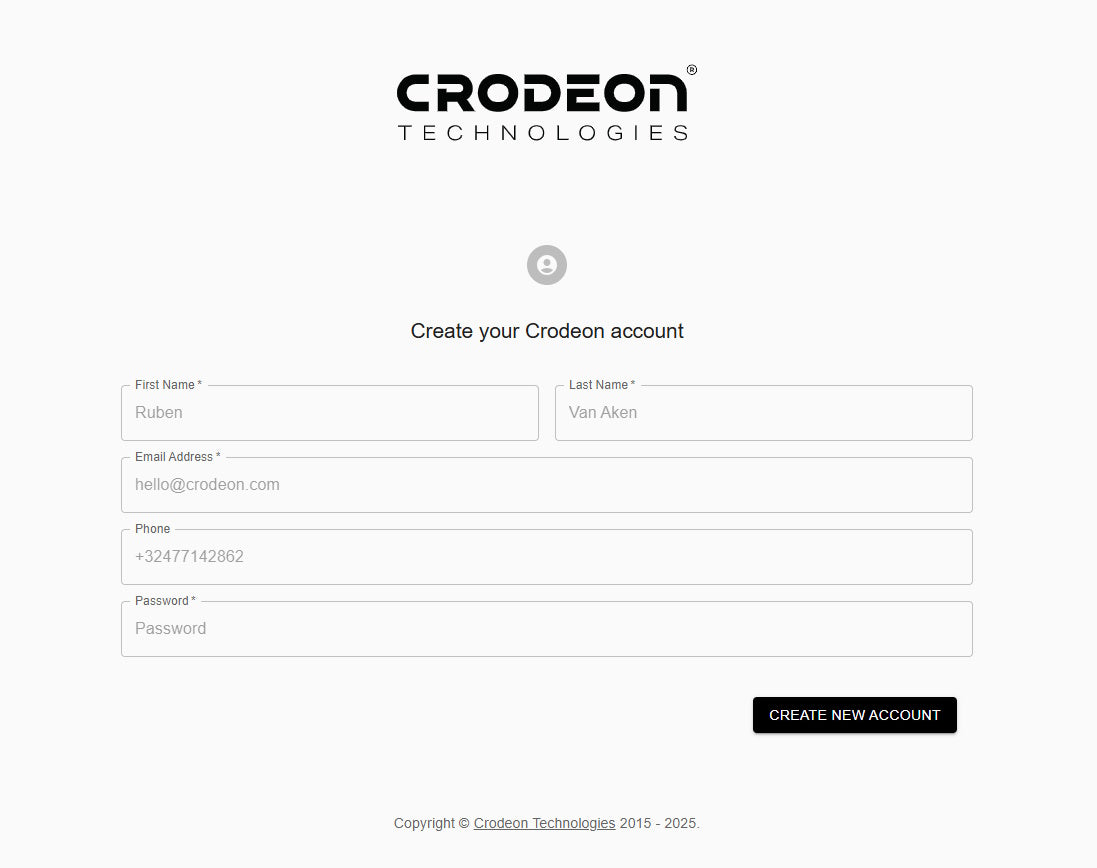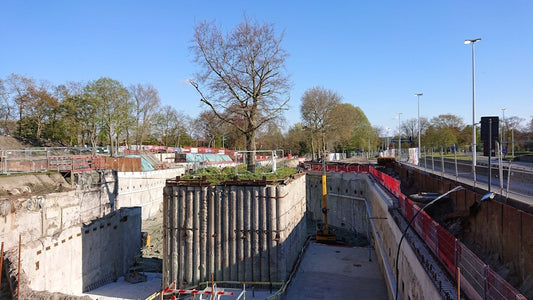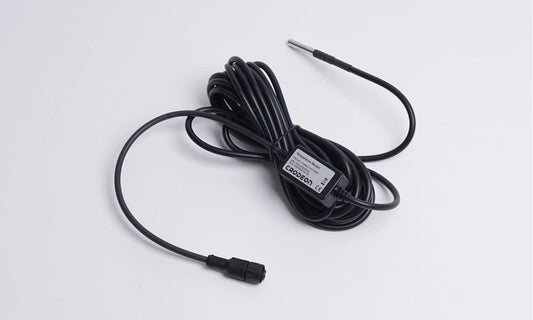Measuring lux in chicken pens, pigsties and other stables

So you're in need of a light sensor, but you're not sure which one. It is important to remember that lux and lumen differ from par (for plants). They are not the same and cannot be substituted.
Both lux sensors and PAR sensors could be valuable for your set up. In this blog we will dive deeper into measuring lux, helping you choose the correct sensor.
Lumen
A lamp emits a certain amount of light, this is expressed in lumen. The range and direction in which this light is being emitted are not taken into consideration.
A 1000 lumen lamp is very bright when it's 1 meter away from you. Make that 10 meters and the lamp suddenly isn't bright at all. The amount of lumen however hasn't changed one bit.
Measuring lux
Lux expresses the extent to which a surface area is being illuminated, taking into consideration how much light actually reaches its ‘goal’. 1 lux equals 1 lumen per m2.
Let's take a look at that same 1000 lumen lamp at 1 meter and 10 meters away. At a 70° angle the lux value is respectively 880 and 8.8, a big difference.
Animal health
In the following section we will dive deeper into lux in poultry farming and pig farming. However other animals (cows, horses, goats…) also need specific lux values in their pens or stables to stay healthy. Measuring lux with lux meters allows you to build your stable or pen in a way that is optimal for your livestock.

Lux in poultry farming
Farming chickens requires a minimum light intensity, depending on the type of chicken this differs. Usually a minimum of 20 lux is advised for keeping chickens. The 20 lux being measured at chicken height, not human height!
The pituitary gland in the chicken brain is strongly stimulated under the influence of light. This gland affects hormones that control the laying of eggs. It is important to note that there is no clear consensus on the light level that chickens need.
Young chicks require more light in order to get familiar with their pen, they have to be able to locate their feed and water. A minimum of 30 lux is advised for this stage for chicks that are meant to later lay eggs. Chicks that are meant for consumption require at least 10 lux but no more than 20 lux at this stage.
Once the animals are older and familiar with their pen, less light is needed for them to find their way. As little light as 5 lux suffices in this case. It also seems as if older animals feel less need for higher light levels than younger animals. The light level affects the rate at which the chickens eat, which of course influences how fast they grow.
Measuring lux can be done with a lux meter. This lux meter can either be connected to an autonomous and mobile system like Reporter, or to an established system that's integrated into the pen.
Turkeys require similar light levels when they are familiar with their pens. When the young chicks are getting to know their pen they need about 100 lux. Once they know their way after about five days, the light levels are to be reduced to 20 lux which is sufficient.

Lux in pig farming
According to EU welfare regulations, pigs need to have at least 40 lux in their pens for at least 8 hours per day. Pigs need to be able to identify fellow pen mates allowing them to communicate with them. They also need to be able to see their feeders and drinking troughs. Studies have shown that melatonin production in pigs stops at 40 lux and up. This means that, to a pig, 40 lux is considered a light environment.
Pigs naturally prefer lower light levels. High level lighting should therefore be avoided. To encourage pigs to sleep and rest, the sleeping areas of their pens should be dimly lit. During studies, young pigs were subjected to different lux levels. They showed a clear preference to spend time in darker areas of 4 lux and less to sleep and rest. Research has also shown that more than 50 lux can increase stress in young pigs. Piglets raised with 120 lux were more active than those raised in dimmer environments. However, their bloodwork clearly indicated that they were less healthy than the latter group. It is however important to note that pigs are not fearful of light.

Light levels can even affect reproduction. Sows who were subjected to 70-100 lux gave birth to more and heavier piglets than the sows subjected to 2-6 lux and 10 lux. Keeping pigs in bright light conditions of 400-700 lux also showed that female pigs experienced a faster reproductive cycle after they stopped lactating. Making them fertile again quicker.
Failing to provide pigs with appropriate lighting can affect their welfare, by increasing stress and agitation. Too much bright light (2500 lux) can even cause eye damage and weight loss. Monitoring and measuring lux in pigsties is frankly a vital part of any livestock monitoring system.
We shouldn't try to look at light levels too much through our human eyes when discussing pigs. Pigs have shown to be less sensitive to red light than we are. Lighting with a more red hue can therefore help humans see in the pen, while the pigs still consider the area to be quite dark.
How to take a lux measurement?
When measuring lux it's important to keep in mind who you want to measure the lux for and whether there is light coming in from windows or other areas.
- Measuring lux should always happen at the eye level of the animals in the pen or farm.
- Making sure that all light fixtures are working and clean provides the most accurate measurement.
- Measure multiple times in the same spot, keeping in mind whether there might be ambient light or not.
- Measuring at night might be the easiest as the presence of daylight can be excluded.

Your own mobile monitoring system
Whether you’re looking to monitor your pigsty or chicken pen. There’s a sensor for your needs. It’s important to remotely monitor your farm 24/7. You want to be notified if the lighting fails, causing your farm to be in the dark. Besides, you want to be able to analyse whether your lux values are actually of the right level. Wrong lux levels in your pen might cause stress on the farm, harming your animals in the long run. Not monitoring your lighting is simply a wasted opportunity.
A remote, mobile and autonomous sensor system allows you to measure lux. Such a sensor module is our plug & play system Reporter. Reporter sends its readings to the cloud, giving you the opportunity to check up on your setup in real time. Besides, all the data is logged and able to be exported to Excel. The available data lets you optimise and analyse as much as you need.
Would you like to combine measuring lux with a Smart Livestock alarm or are you looking to plug your existing sensors into a remote monitoring system? Please contact us and we'll look into the different options for your specific case.
Sources:
Artificial light in poultry farming
The pig site: Lighting for Pig Units
Dr. Nina Taylor: Lighting for Pig Units
Lighting in pig buildings: The principles
Lighting in pig buildings: In practice









